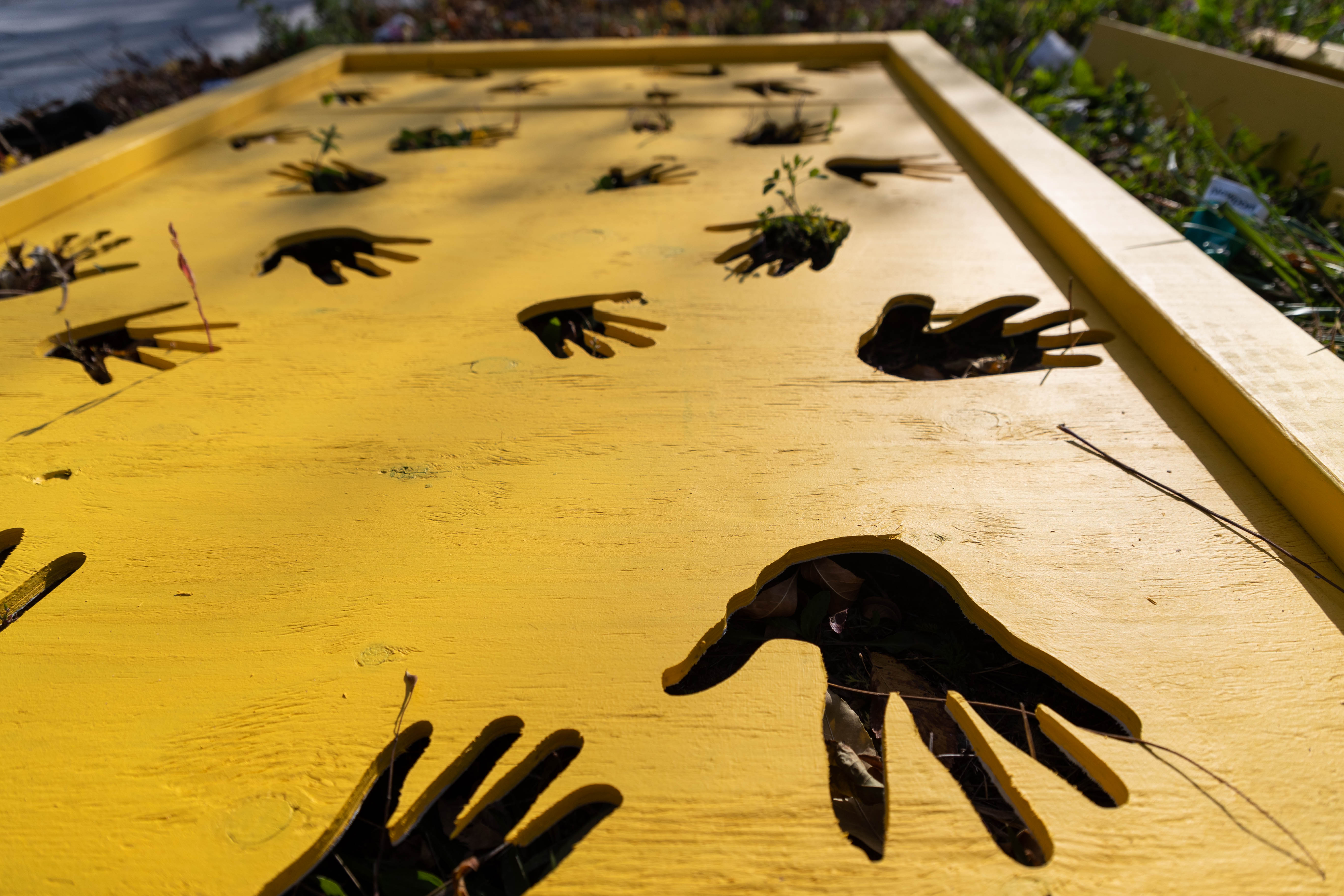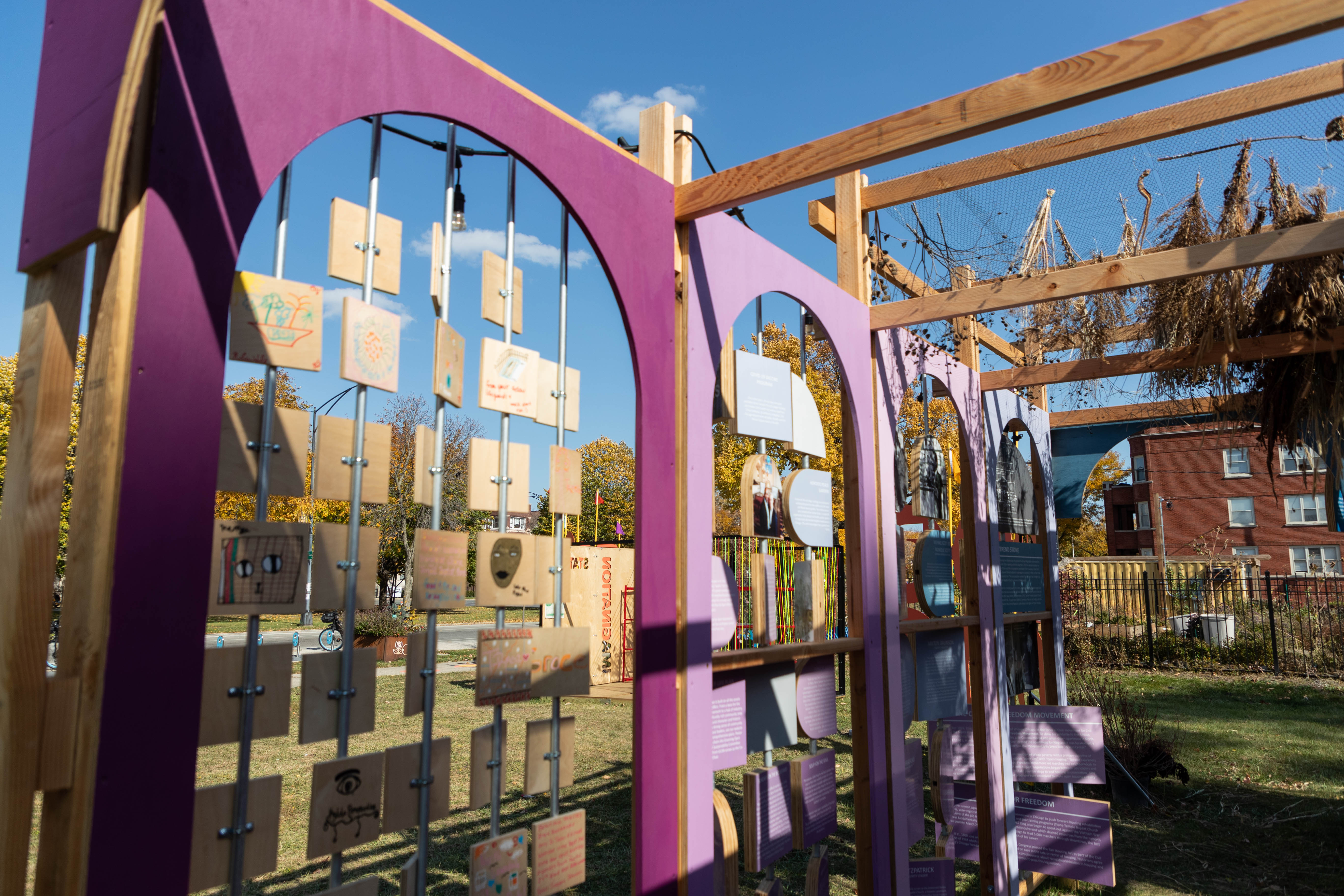During the weeklong Jewish holiday Sukkot in October, temporary shelters called sukkahs popped up outside synagogues and Jewish homes around Chicago and the suburbs.
Sukkot ended on Oct. 16 this year, but now, a couple weeks later, three sukkot are still standing in an empty lot on Douglas Boulevard in North Lawndale. A sukkah is a structure that is designed to be temporary, an evocation of the tents and huts that the Israelites would have occupied during their 40 years in the desert after they fled Egypt.
For the first-ever Chicago Sukkah Design Festival, three groups of architects designed sukkot for three North Lawndale organizations to use long term for their programming.

One sukkah was designed as a shelter that doubles as a museum-style exhibit tracing the history of a North Lawndale church that played a big role in the Civil Rights movement in Chicago. Another will become a produce stand at a community group’s urban garden. The third is a reading lounge that will be used in a program whose mission is to help North Lawndale kids grow up to be lifelong readers.

The Sukkah Design Festival is a bridge between North Lawndale’s history as one of Chicago’s most prominent Jewish neighborhoods in the first half of the 20th century, to a majority-Black neighborhood now struggling with the legacy of disinvestment and population loss.
Chelsea Ridley, project director for Open Books-North Lawndale Reads, said the sukkot make the connection visible, pointing it forward. “You have the past and the present of the neighborhood looking at its future together,” she said.
Each of the three sukkot is a partnership of the Jewish past and the Black present to shape the future circumstances of North Lawndale and its residents, Ridley added.
Open Books-North Lawndale Reads has created free libraries and book nooks in the community, in two cafes and a barber shop in the neighborhood. The sukkah that Chicago Design Office and Made in Englewood created, called Imagination Station, is a roofless room, a steel frame with walls of bungee cords and plywood, as well as a plywood floor.
It will be moved to the Men Making a Difference (MMAD) neighborhood gathering place at 15th and Homan, and will be used primarily in warm months as “a place where anyone can sit down and read, alone or together,” Ridley said.
Using a Jewish holiday to create structures that North Lawndale’s Black residents will use long term “is an attempt to engage the layers of history in North Lawndale,” said Joseph Altshuler, an assistant professor of architecture at the University of Illinois and principal at the Chicago architecture practice Could Be Design. Altshuler organized the Sukkah Design Festival. A sukkah, he said, “is an outdoor format that can be a platform for unexpected programming.”
Altshuler got the initial idea from an architectural competition to design a modern sukkah that was held in New York in 2010, but he wanted his to have a functional outcome. Where better than North Lawndale, with its two eras?
Between 1910 and the 1930s, North Lawndale developed into one of Chicago’s major Jewish neighborhoods, with about one-fourth of Chicago’s quarter of a million Jews, many of them new immigrants, living there. Among them were Golda Meir, a future prime minister of Israel, Benny Goodman, the “king of swing” bandleader of the 1940s, and Eli Schulman, the cheesecake king of Chicago. At one point, there were 49 synagogues in the neighborhood.
In the middle of the century, Black people started moving to North Lawndale as Jews moved to the suburbs and North Side neighborhoods, and, by the 1960 Census, the neighborhood was 91% Black. Major employers like International Harvester, Sears, Zenith and Sunbeam left, and with redlining and other forms of disinvestment, the neighborhood declined. Its population is now a little over one-quarter what it was in 1960.
Among the stalwart institutions in North Lawndale is Stone Temple Baptist Church, which since 1954 has been in a monumental space on Douglas Boulevard that was built in 1924 as a Rumanian synagogue. Rev. Martin Luther King Jr. spoke there many times, and it was a base of several other Civil Rights efforts.

One of the three sukkot was designed for the church. The architecture firm New Office filled its walls with photos and text about Stone Temple’s history. Bishop Derrick Fitzpatrick said the exhibit will initially be placed outside the church, but they’re planning to make space for it inside.
Stone Temple owns the empty lot where the Sukkah Design Festival was held. “When the idea came up, we embraced it wholeheartedly,” said Fitzpatrick, grandson of the church’s founder. “We want to keep hold of and strengthen the connection between our neighborhood’s Jewish heritage and its African American heritage.”
Dennis Rodkin is the residential real estate reporter for Crain’s Chicago Business and Reset’s “What’s That Building?” contributor. Follow him @Dennis_Rodkin.
K’Von Jackson is the freelance photojournalist for Reset’s “What’s That Building?” Follow him @true_chicago.



